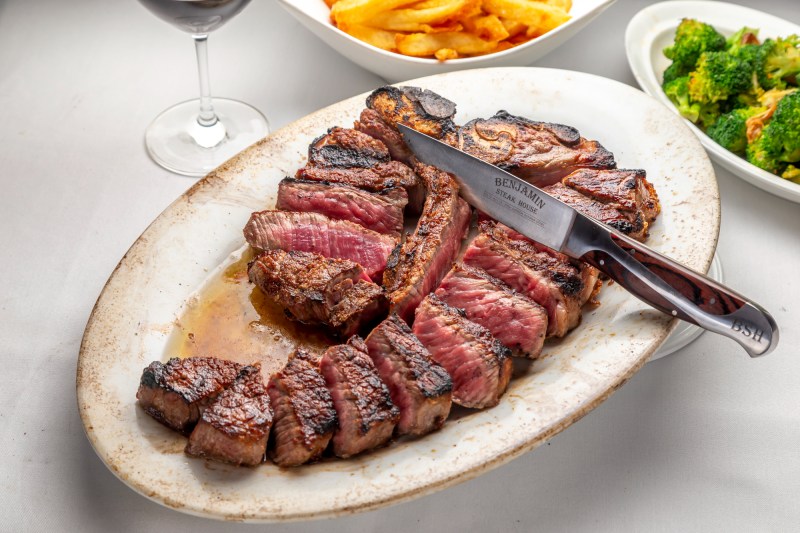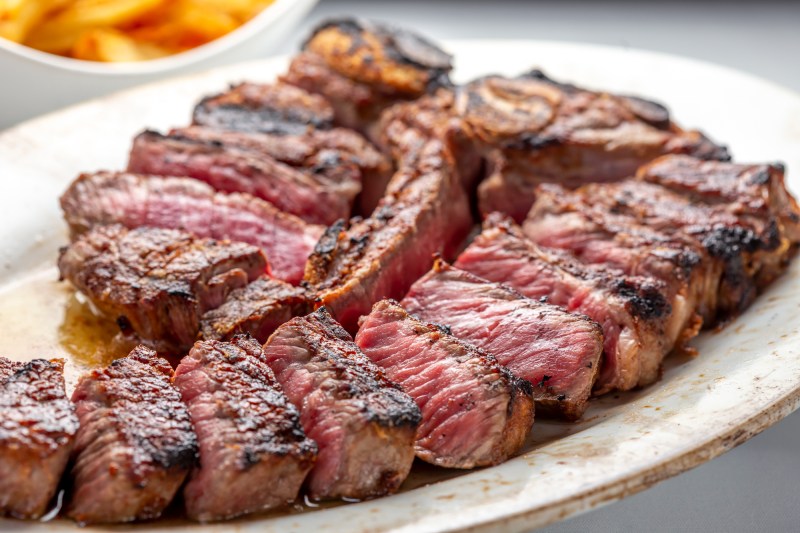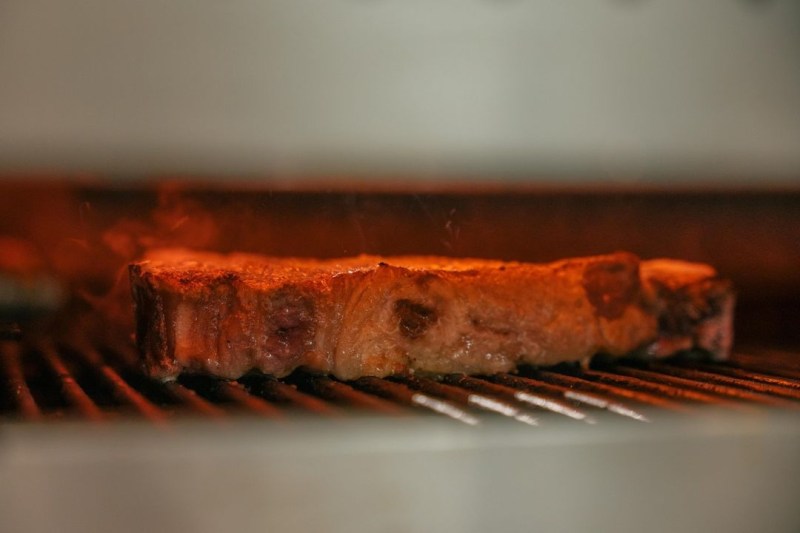
Cooking a great steak requires both technique and practice to get it right. Although it appears straightforward, there are a plethora of choices and decisions that go into proper steak cooking. What’s the best cut? How do you season a steak properly? What temperature should the grill be at? For the best advice, why not seek the help of a steakhouse professional?
As a steak expert, Executive Chef Arturo McLeod of Benjamin Steakhouse has a wealth of knowledge on beef. Possessing over 30 years of preparing meat between Benjamin Steakhouse and Peter Luger, McLeod knows his beef. Benjamin Steakhouse is a family-owned restaurant that prides itself on high-quality steaks and fantastic service. Besides New York City, the restaurant has locations in Tokyo, Japan.

Porterhouse, the steakhouse classic
For that classic American steakhouse experience, there’s nothing like a massive porterhouse. And at Benjamin Steakhouse, this cut is the unequivocal star. Diners can choose their porterhouse serving sizes for two, three, or four hungry appetites. And trust us, the porterhouse for two is more than enough dry-aged meat for two carnivores. For sides, we recommend the hash browns. Also, don’t forget to pair it with a nice glass of red wine.
With porterhouse being the star, McLeod takes great care in selecting the best. He pays particular attention to the eye of the steak, which on the porterhouse, is the cut known as the New York sirloin. According to McLeod, the “eye of the steak should be nice and big because it has so much flavor. I’m also always looking at the marbling in a steak. The best steaks are the ones with the best marbling because they’re the most tender.”
As part of the Benjamin Steakhouse experience, when the steak is brought out to the diner, it’s served on a hot plate that’s absolutely dripping in clarified butter. The steak is incredibly charred on top because the meat is placed back in the broiler after being covered in butter for the final cook. It’s also aggressively seasoned in the best way. The salt only helps heighten the dry-aged funk of the meat. Our pro tip: Don’t forget to drizzle healthy amounts of the clarified butter from the steak platter onto your steak slices.
While the butter, cooking, and salt are all factors in this porterhouse, the real star is Benjamin’s dry-aging process. Fittingly, the restaurant has its own dry-aging box.
“Our dry-aging room is kept below 35 degrees Fahrenheit with a humidity of less than 90% and an ample amount of airflow,” McLeod said. “We age large primal cuts of beef for about five weeks. During this time, some truly amazing things happen. Water from inside the meat is drawn out through evaporation, which causes the meat to shrink and the beef flavors to become more concentrated. Also, natural enzymes inside the beef break down the meat and tenderize it.”

Steakhouse cooking techniques
The first thing McLeod recommends is to source USDA Prime beef, which guarantees a high level of marbling and tenderness. If USDA Prime isn’t an option, McLeod has a great hack for lesser-quality steak — punching holes in the meat with a large fork. This technique will help tenderize and ensure faster cooking. For grilling, McLeod personally prefers cuts with more marbling, such as ribeye, New York strip, or skirt steaks. The steak should also be butchered uniformly (the same thickness) to ensure even cooking.
While there are plenty of seasonings and marinades out there for steak, sometimes simple is best. “It’s actually very easy for us!” McLeod explained. “We don’t need to season it or marinate it because the dry-aging process provides all the flavor it needs. We just sprinkle kosher salt on both sides of the steaks and grill it lightly to get the grill marks.”
Any diner who has ever enjoyed a steak at a classic steakhouse like Benjamin’s will immediately notice its intensely savory crust. This charred Maillard crust is courtesy of the roaring hot broilers at Benjamin Steakhouse. But for home cooks, how does one get that patented steakhouse crust at home? The answer, according to McLeod, is an iron skillet.
“Heat up your iron skillet and put a bit of butter or oil and wait for your skillet to get very hot,” McLeod said. “Then you just add your steak to the skillet and let it sit on each side for about 3 to 4 minutes. You could also finish it in the oven after the skillet to really get it charred.”
But if you’re interested in some outdoor grilling, aim for a temperature that’s above 500 degrees Fahrenheit. If the grill doesn’t seem hot enough, McLeod likes to throw some fat on it. This will fuel the flames and increase the heat. McLeod also recommends using natural hardwood charcoal instead of gas grills due to charcoal’s natural, smoky flavor. Since most steaks are about 1 inch thick, McLeod recommends grilling for about 5 to 7 minutes on each side for medium-rare. For medium, grill approximately 8 to 10 minutes (11 to 13 minutes for well done).
Editors' Recommendations
- Meet the mail-order wagyu beef company prized by Gordon Ramsay and David Chang
- How (and why) parmesan, pecorino romano, gruyere, and asiago cheeses may help with digestive issues
- 3 batch drink recipes perfect for the holidays: Moscow mule, martini, and good ol’ spiked punch
- Weight loss while eating more fat – Here’s how it works
- All-Clad kitchenware, GIR spatulas and more: The best kitchen gifts for anyone who lives at Williams Sonoma




